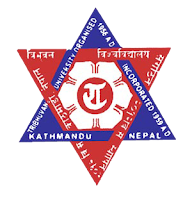
•Analyze business plans to establish future human resource requirements.
•Estimate future HR availabilities
•Reconcile requirements and availabilities.
•Formulate action plans.
•Contribute to the achievement of business plans and thus to future organizational success.
Characteristics/Features of HRP
Based on the above definitions and discussions' now we can list the basic characteristics/features of HRP for our purpose. Some of the important features that describe the basic characteristics of HR planning are:
1.Ongoing and dynamic process:
HRP is ongoing process because it is not only the plan rather it is also an action plan. It also covers evaluation and control functions. It does not stop anywhere until the organization achieves its objectives. It continuous till the organization is alive. It is dynamic in nature because its objective is to support organizational strategy. Both internal and external environment of HRM is dynamic is nature. So, to meet the challenges posed by the environment strategic plan itself is dynamic. Therefore, HRP is also dynamic in nature; otherwise it will have no use.
2. Involves interrelated activities:
HRP is the balance sheet of many different but interrelated activities of HRM. Major activities incorporated in HRP are:
(a) properly understanding the HR demand and supply,
(b) forecasting future HR demand and supply,
(c) preparing present HR inventory and HR information system
(d) anticipating manpower problems,
(e) preparing implementation programs (i.e. recruitment to retirement - R2R), and
(f) control and evaluation of those activities, etc.
3.Focused towards development of HR:
HR is not merely a plan rather it is also a guideline for human resource development (HRD) as discussed in development component of HRM in chapter one. Major components of HRD (as discussed earlier) are employee training, management development and career development. Successful implementation of HRD is crucial to the success of many enterprises and to the development of its employees.
4.Goal directed:
It is not only organizational goal directed rather it is equally directed towards achievement of organizational and employee goals. HRP recognizes that "people need organization and organization needs people".
5.Equally applicable:
HRP is equally applicable to all types of organizations (profit-non profit, government-private, national-international, etc). A marketing planning or profit/tax planning may not be applicable to social/political organizations but HR planning is necessary even to those organizations.
6. Foundation for HR activities:
All major HR activities/ components of HR (R2R) come under the preview of HRP. Strategic and flexible HR planning provides guideline for future HR activities so that strategic objectives of the organization are achieved easily and efficiently.
7. Unavoidable part of strategic planning:
HRP is not separate from the corporate planning. It is an integrated part of strategic planning because HRP is directed towards managing HR at all levels of business for implementing the strategy. It is the key component to achieve corporate strategy through efficient, motivated and committed HR.
8.Hierarchy and time based:
Strategic plan is hierarchy and time based. To implement strategic planning (long-range/4-5 years) the focus of HRP is towards analysis of HR issues. To implement tactical planning (middle-range/2-3 years) the focus is towards forecasting HR requirements. Similarly, to implement operational planning (short-range/up to 1 year) the focus of HRP is focused and limited towards action plan.
Major Activities of HRP
HRP is directly related to an organizations success and failure. It serves as an analysis of current and future needs of the organization. The activities involved in the HRP helps to guide an organization in several areas. They are staffing, training and development, compensation and benefits and so on. The major activities of HPR include:
1. Analyzing the objectives of HRP:
This is the first and most important activity of HRP. In most of the organizations, the main purpose of HRP is matching employee's abilities to the organizational requirements. The emphasis is on future needs instead of present arrangements. For this purposes, managers need to specify the objectives of HRP with regard to the utilization of HR in the organizations. While developing the specific objectives of HRP managers need to address the following questions: •Whether the vacancies will be filled internally or externally? And why? •What will be selection procedure? •Whether there is the need for training and development or not? •How to restructure job positions and why?
2. Forecasting future HR demand:
This is the second major activities of HRP. Forecasting future HR demand can be done in two ways. First, forecasting future HR requirements based on mathematical projections of trends in the economy, and developments in the economy. Second is by using judgmental estimates based upon specific future plans of the company. Forecasting future HR demand is the most complex activities of HRP. They require through knowledge. It also demands the utilization of certain assumptions.
3. Preparing present HR inventory:
This is the third major type of activity involved in HRP. This activity is done to know the present situation of HR in an organization. It also helps to analyze the degree to which these resources are employed. Whether they are used optimally or not is ascertained here in this activity. If they are not utilized optimally, the reasons for it are ascertained or identified.
4. Anticipating HR problems:
This is the fourth major activity of HRP. It is done by projecting present human resources into future demands. This activity is necessary to determine staff adequacy both quantitatively and qualitatively. Here, managers need to address questions like: •Why people will continue or discontinue their jobs? •What precautions will be needed to retain the present employees? •Is there a motivational problem with present work force or not?, etc.
5. Planning the necessary programs:
This is the last major activity of HRP. It involves identifying the necessary programs that is required to implement HRP into actions. The programs that are required may be recruitment, selection, development, motivation, and compensation so that future staff requirements will be met.






Post a Comment
Post a Comment